Seaweeds of the South African South Coast


Order Ceramiales
Family Rhodomelaceae
Herposiphonia falcata (Kutzing) De Toni 1903: 1060
Plants brown to blackish, prostrate, apical tips curved upwards. Indeterminate axes attached by digitate haptera arising from pericentral cells. Main axes with segments about as long as broad, with 10-12 pericentral cells. Haptera one or two per segment. Determinate branches cylindrical, incurved, apices fairly blunt, number of pericentrals often 12 (10-14) except in basal segment (5-6 pericentrals), to 1200 (-2000) µm long, 80-120 µm in diameter, comprising (15-) 18-25 (-30) segments, segments 0.5-0.8 times as long as broad. Tetrasporangia ca. 70 µm diameter, in 3rd-14th segments of determinate branchlets, in rectilinear series of up to 12 per branchlet. Antheridial stands cylindroconical, ca. 240x50 µm, adaxial on segments 3-9 of branchlets. Cystocarps urn-shaped, 500-600 µm diameter, one per branchlet, on segments 4 or 5 but in some specimens only after segment 15. We include records of H. insidiosa here (see note below).
Collections, ecology and regional distribution
Recorded from Brandfontein (just west of Cape Agulhas) to Mzamba (22-48). A very common species, usually epiphytic on articulated corallines and sometimes on other larger algae.
World distribution: South African endemic.
Type locality: “Cape of Good Hope” (Silva et al. 1996).
Note: Stegenga et al. (1997) point out that this species is very similar to the more widespread H. insidiosa (Grev. ex. J.Agardh) Falkenberg (1901) that was recorded from Kwazulu-Natal by Wynne (1984) and from Hluleka by Bolton and Stegenga (1987). Our slide material of the Hluleka specimens cannot be distinguished from our material of H. falcata, suggesting that on our coast, these entities need re-examination.
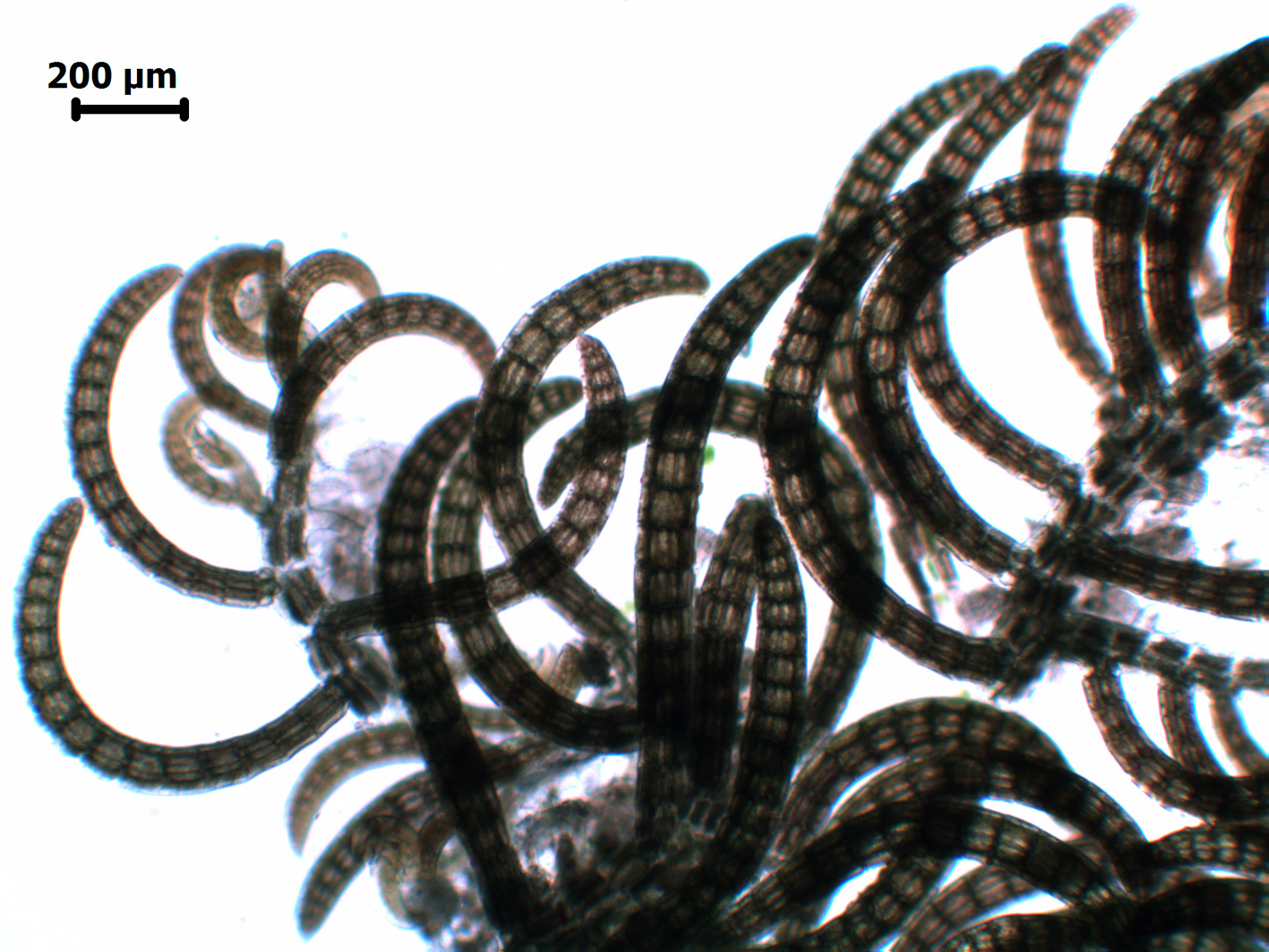
Herposiphonia falcata, fresh material, Nature’s Valley.
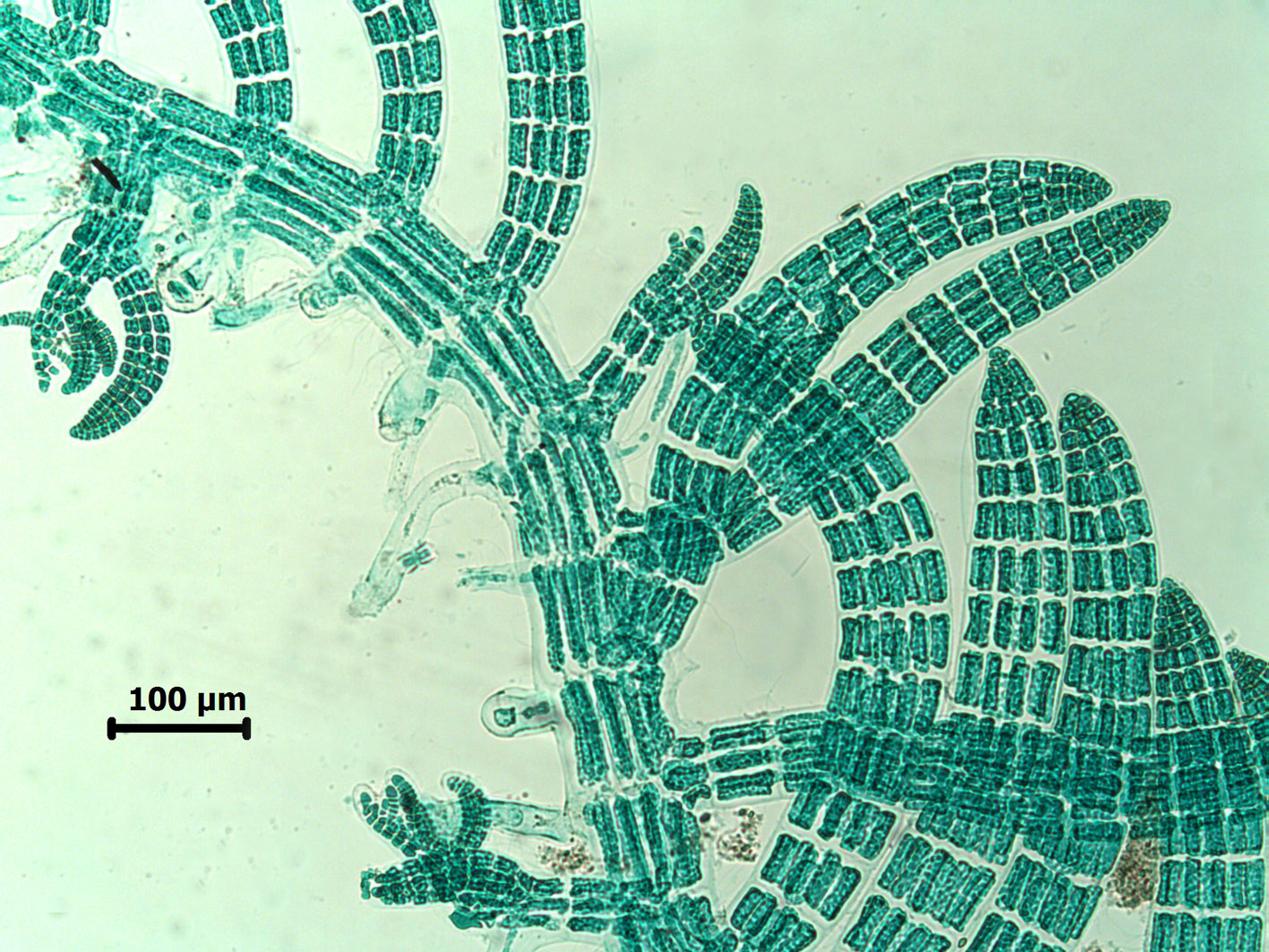
Herposiphonia falcata, vegetative structure (stained slide).
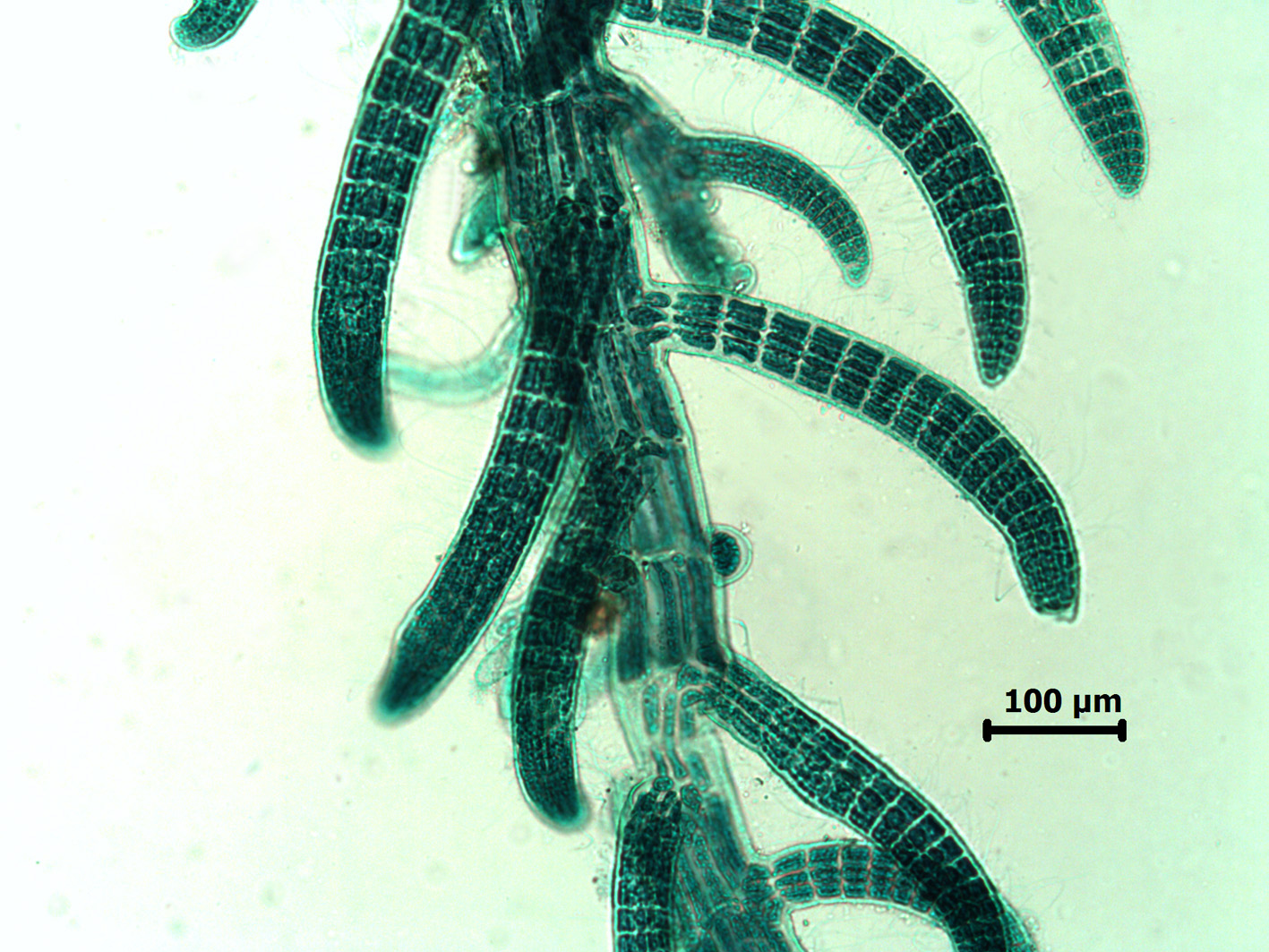
Herposiphonia falcata, determinate lateral s arising dorso-laterally (stained slide).
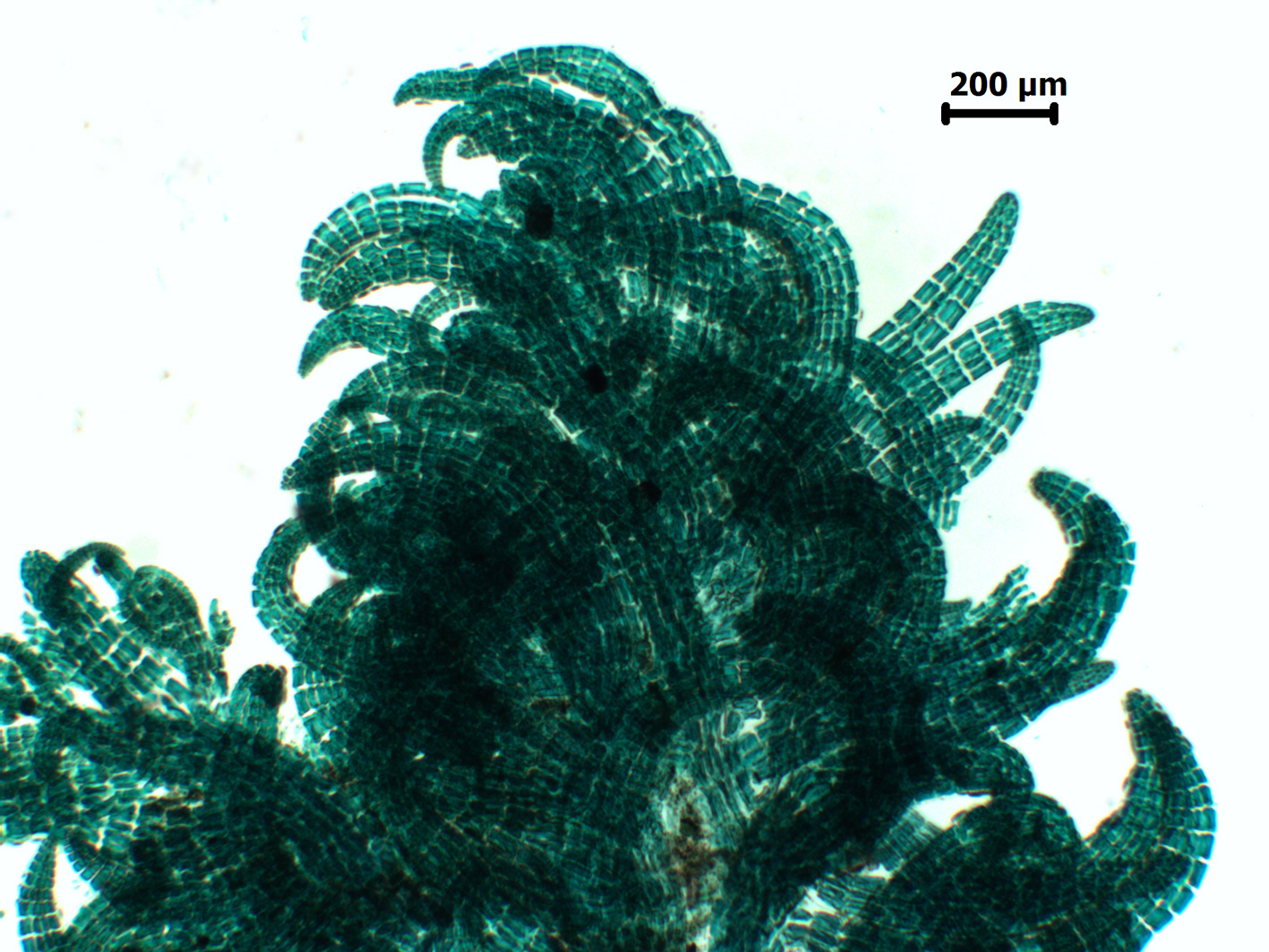
Herposiphonia falcata, densely branched thallus (stained slide).
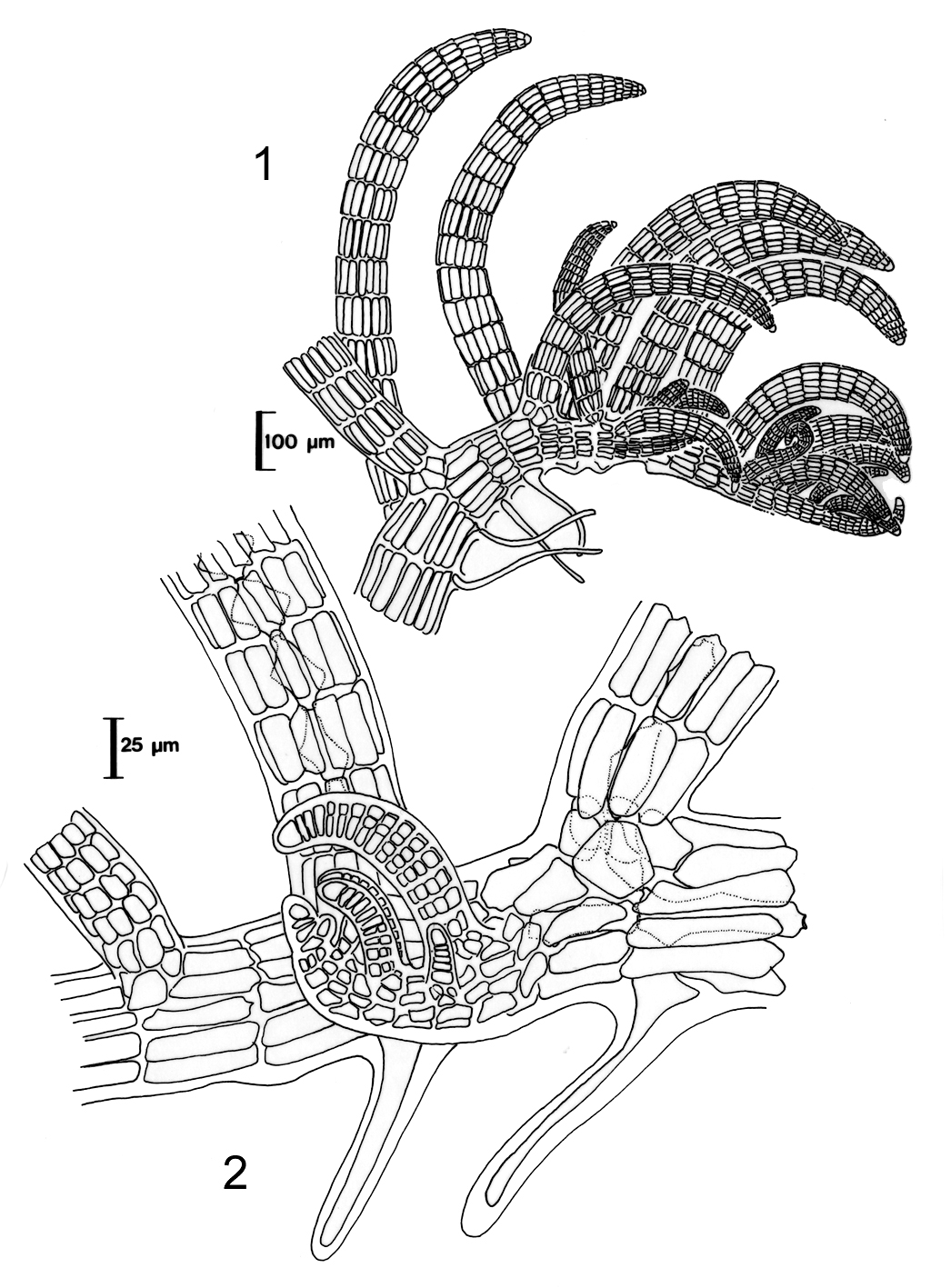
Herposiphonia falcata. 1. Thallus apex. 2. Detail of prostrate axis, showing origin of rhizoids, determinate and indeterminate laterals. Reproduced from Stegenga et al. (1997).
References Herposiphonia falcata
Bolton. J. J. & H. Stegenga. 1987. The marine algae of Hluleka (Transkei) and the warm temperate/sub-tropical transition on the east coast of southern Africa. Helgoländer Meeresuntersuchungen 41: 165-183.
De Toni G.B. 1903. Sylloge algarum…Vol. 4. Florideae, Sec. 3. Padua. 775-1525.
Falkenberg P. 1901. Die Rhodomelaceen des Golfes von Neapel… Fauna Flora Golfes Neapel 26. Berlin. Xvi + 754p., 24 pl.
Silva, P.C., Basson, P.W. & Moe, R.L. 1996. Catalogue of the benthic marine algae of the Indian Ocean. University of California Publications in Botany 79: 1-1259.
Stegenga, H., Bolton, J.J. & R. J. Anderson. 1997. Seaweeds of the South African west coast. Contributions from the Bolus Herbarium 18: 655 pp.
Wynne, M.J. 1984. Notes on Herposiphonia (Rhodomelaceae, Rhodophyta) in South Africa, with a description of a new species. Cryptogamie, Algologie 5: 167-177, 12 figs.
Cite this record as:
Anderson RJ, Stegenga H, Bolton JJ. 2016. Seaweeds of the South African South Coast.
World Wide Web electronic publication, University of Cape Town, http://southafrseaweeds.uct.ac.za; Accessed on 07 January 2026.